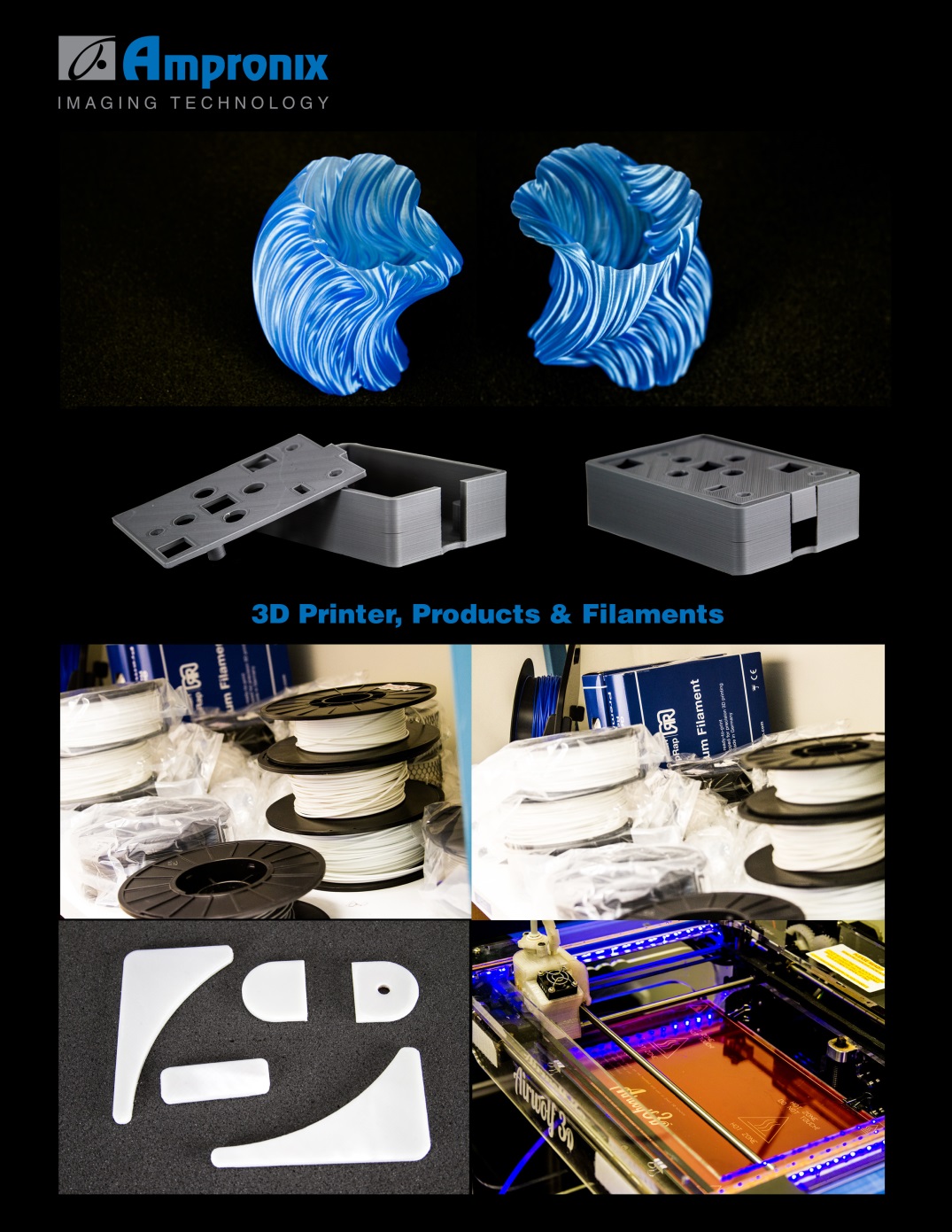3D PRINTING AND AMPRONIX
The Utilization of 3D printing in Research and Development Department expedites creative engineering process, drive prices down.
In The Third American Revolution, renowned American economic and social theorist Jeremy Rifkin proposes that the world is in the midst of experiencing a reprise of the manufacturing/technological boom that rocked the 18th and 19th centuries.
As industrial innovators are now beginning to adopt digital approaches to production, it seems that the 19th century, conveyor belt and factory floor manufacturing process is most likely to be rendered obsolete.
According to Medical Device and Diagnostic Industry News, 3D printing will change the way we manufacture altogether. It is projected to reach global market growth worth $8.6 billion by 2020.
The benefits to adopting such methods are vast. 3D printing will accelerate the prototyping phase, drastically shortening the period between development and mass production. All this translates into more availability and affordability for clients.
In fact, Ampronix will be introducing our very first product initially forged on the in-house 3D printer within the next month. The invention devised on the 3D printer is our 4K Boxx and 2K Boxx, a video manager that allow users to change DVI.
View our 3D Printing Process
Although the actual product is manufactured with materials created by a third-party, we utilized the printer to actualize the prototype and for subsequent experimental designs. Currently, we only carry one product that is completely manufactured via 3D printing, a remote control for medical technicians.
We have also begun to employ 3D printing to find solutions to minor issues. For instance, an internal instability issue with our 20 inch Dual Displays for the OEC 9800 was fixed when our engineers created a 3D printed support customized to fit the frame.
Ampronix first took an interest in additive manufacturing in 2014, when we purchased a commercial 3D printer. After realizing its potential, we invested in another one that provides more accuracy and precision.
“Manufacturing prototypes is an expensive process, a mold that is only good for 50 products costs anywhere from $2,000 to $3,000.”
Matt Zadeh, Electrical Engineer and 3D Printing Specialist at Ampronix
But using a 3D printer inherently means that creating a product no longer has a necessity for molds. Instead, code simply needs to be written before the printer can construct. The process starting from development of code, to having a completed product, can take as little as one work day.
As an additional benefit, the type of material our 3D printer uses does not entail compromising on quality. We use four kinds of plastic filaments that parallel the type of materials we already use. The industrial-grade plastics have the ability to withstand temperatures up to 400 degrees Fahrenheit.
Ampronix is at the forefront of utilizing this evolving technology because we are always striving to serve our clients in the best way possible. In the future, our company is looking into how we can achieve wholesale adoption of the 3D printing process.
Instead of limiting our production to support pieces and prototyping, we want to be able to manufacture all materials needed, in-house. This would effectively lower costs while entitling us to more authority in the overall production process.
In the next four years, the manufacturing sector will undoubtedly experience a shift in the way in which it is facilitated. At Ampronix, however, we are leading the medical imaging industry in utilizing 3D technology to offer only advanced and cost efficient products.
Source & Image Credit: Ampronix




























